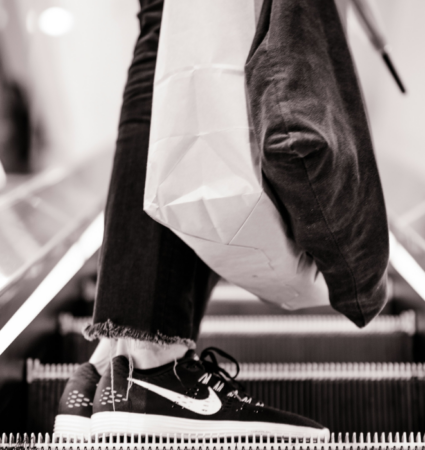
Product Pages: 10 Tips to Get Your Amazon Images Right

With 3.25 billion visits to its website in June 2024, Amazon is the go-to destination for many customers when searching for the perfect product to solve a problem.
But seeing is believing. The images you use on eCommerce marketplaces can prove make or break for converting customers – either convincing them that your product is the right choice or putting them off a sale altogether. So, while it’s crucial to ensure traffic is flowing to your Product Pages, it’s equally important that your images encourage consumers to check out.
Images on Amazon Product Pages aren’t just about appealing visuals. They can do a lot of show and tell for you, reducing the heavy lifting done by your product descriptions. They can quickly answer questions, demonstrate features, and remove doubt or barriers to purchase.
Use the 10 considerations below to ensure your Amazon Product Page images and videos inspire and persuade even the most discerning buyers.

1. Image clarity and quality need to be perfect
Image clarity is fundamental for buyers to see specific details. Amazon requires the size to be at least 1,000 pixels for customers to be able to zoom in.
From a user experience perspective, a blurry main image on the Amazon search results can lose customers before they even click through to your Product Page. They’re likely to scroll to the next (more easily viewed) listing.
Pin-sharp images and videos also reflect the trustworthiness and quality of your brand and product. If the images are high quality, that’s how the product is likely to be perceived. An eye-catching first image can stop buyers scrolling and entice them to visit your Product Page, so look at alternative product listings and make sure your images stand out.
2. Keep Product Page images consistent with your brand
As much as distinctiveness is recommended to set your brand apart from others, maintaining a consistent style across your own product lines is also important. Your Amazon images should therefore be similar in style to support a cohesive brand identity, aligning with other marketing materials and brand assets, such as video adverts, and your website itself. That includes following the same usage of logos and graphic devices such as brand shape overlays.
3. Offer as much detail as possible
It’s essential to show the product from all angles, otherwise buyers could be left in doubt over whether all of it is suitable – or may even suspect you’re hiding something. Arrows and labels can help highlight key features, while detailed diagrams can satisfy more scrupulous or technically minded buyers.
Likewise, Amazon requires the main image to show the product outside of its packaging, so customers get a good look at exactly what you’re selling straight away.

4. Use backgrounds to sell your product
While it can be tempting to only use a plain white background for simplicity and cleanness, Amazon also requires a contextual image that helps buyers to visualize using the product in a relevant environment. Consider whether the product will be used indoors or outdoors, or in specific rooms, such as kitchens for cooking utensils.
Ensure the background and surrounding objects are in keeping with the price range of the product. If you’re trying to promote your product as aspirational or premium, images that display an uninspiring, cluttered or drab location can undercut your work.
5. Ensure every image plays a role
When you’re deciding what images to include, it can help to draw up a list of common questions, and then ensure each one is answered by your photos. If users are frequently asking the same question on your Product Page, such as the length of a charging cable or the number of ports the product has, consider adding a photo that answers it.
Each image should share new information and have a distinct purpose, to avoid users leaving your Product Page after wading through too many similar images. Make the most of your image allocation – Amazon allows up to nine photos or videos – by considering the purpose and message behind each one. That usually means at least one showing a general overview, then several others focusing on specific features or use cases. But the key selling points should appear in the first images of the carousel, so users don’t have to swipe too far to get the information they need.
Comparison photos help illustrate scale and dimensions, particularly in situ in the environment. For example, if you’re selling a table, showing it set up in a dining or living room can help buyers gauge the size against other furniture. Just keep in mind that the product must fill at least 85% of the image for Amazon to accept it.
6. Connect the product to real people
Show the product being used by a person, which can lend a personal touch while proving it’s easy to hold or use. It’s particularly important for clothing items to be shown on a person, so buyers can judge the fit. This can help persuade buyers who might be on the fence about the product’s utility. You can provide further evidence by overlaying customers’ quotes, satisfaction statistics and star ratings from reviews.

7. Ensure all images are accurate and up-to-date
This is one of the most important criteria for your Amazon images, since misleading or inaccurate photos can lead to returns and negative reviews, in turn lowering future conversion rates. It’s also an Amazon requirement that images accurately reflect the product, so your photos must be updated regularly to reflect any changes.
8. Check all images are relevant
There’s a lot resting on Amazon images since customers tend to focus on them without reading the entire Product Page, so sellers should treat them as infographics.
This means images need to include descriptive phrases that help buyers understand what they’re looking at and why the product is effective. Calling out the benefits of specific features shows the product is well designed and not over-engineered. Buyers of a camping stove, for example, will be looking to see which parts and materials are heat-resistant.
Highlight new features and innovations, communicating that your brand is keeping up with market change. Text in the image can make comparative reference to competitor products, such as faster speeds, longer battery life and lighter weight. You can even show side-by-side comparisons or include a comparison table offering an at-a-glance view, powerfully differentiating you from competitors. Point out features that back up your claims, such as which features make the product more durable or user-friendly.
9. Take advantage of seasonality
Tap into seasonal events by creating tailored images and videos that entice buyers looking for gifts or decorations, while accentuating brand personality. This could be as simple as adding a festive bow, Valentine’s roses or graduation diplomas.

10. Showcase related products
Show the product within a family of others, such as complementary furniture or tech that can connect to the device. It’s a great way to cross-sell and build the brand as a lifestyle, as well as reinforce trust and credibility by showing you stock related products in the space.
11. Get your images picture-perfect
Creating images and videos that present your product in the best light is just the start. By thinking more rigorously about what you show in them, your Product Page images become not just a nice decorative add-on, but an influential driver that gets buyers over the line.
Download the paper
If you’d like to learn more about best practices for Amazon Product Page content right, and how that can lead to increased conversions, download our whitepaper Identifying Product Page Blind Spots: The Power of Conversions today.




